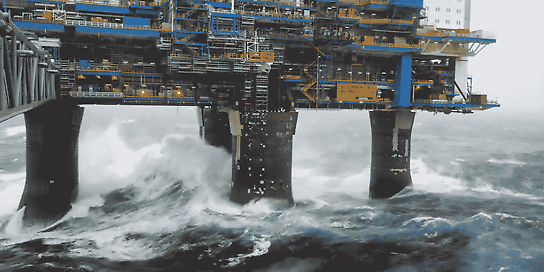In fluid dynamics the Morison equation is a semi-empirical equation for the inline force on a body in oscillatory flow. It is sometimes called the MOJS equation after all four authors—Morison, O’Brien, Johnson and Schaaf—of the 1950 paper in which the equation was introduced.[1] The Morison equation is used to estimate the wave loads in the design of oil platforms and other offshore structures.

Description

Wave loading on the steel jacket structure of a Production Utilities Quarters Compression (PUQC) platform in the Rong Doi oil field, offshore Vietnam (see Oil megaprojects (2010)).
The Morison equation is the sum of two force components: an inertia force in phase with the local flow acceleration and a drag force proportional to the (signed) square of the instantaneous flow velocity. The inertia force is of the functional form as found in potential flow theory, while the drag force has the form as found for a body placed in a steady flow. In the heuristic approach of Morison, O’Brien, Johnson and Schaaf these two force components, inertia and drag, are simply added to describe the inline force in an oscillatory flow. The transverse force—perpendicular to the flow direction, due to vortex shedding—has to be addressed separately.
The Morison equation contains two empirical hydrodynamic coefficients—an inertia coefficient and a drag coefficient—which are determined from experimental data. As shown by dimensional analysis and in experiments by Sarpkaya, these coefficients depend in general on the Keulegan–Carpenter number, Reynolds number and surface roughness.
The descriptions given below of the Morison equation are for uni-directional onflow conditions as well as body motion.

Fixed body in an oscillatory flow

Moving body in an oscillatory flow



